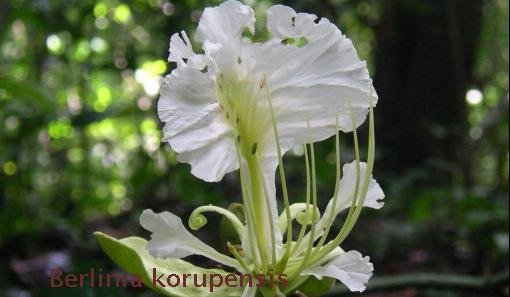The new botanical year opens with good news. Giant trees in the equatorial rain forests, tiny fungi (fungus), wild coffee, these and many others, are among the approximately 2,000 new species (animals and plants) discovered and described by researchers

The new botanical year opens with good news. Giant trees in the equatorial rain forests, tiny fungi (fungus), wild coffee, these and many others, are among the approximately 2,000 species (animal and plant) newly discovered and described by researchers.
This is a third higher number than the findings in previous years, of these, about 300 plant species were described and documented by researchers from a hundred countries that were "organized" by the employees of the Royal Botanic Gardens - Kew.
The discoveries show how little is known and how lacking is our understanding of the plant world. What was opened as positive news "changes shape", since the findings highlight the fact that about a third of the discovered species are in danger of extinction. This is because a lack of information causes a lack of options for preserving species. Without clear information about the existing it is difficult to plan and carry out conservation activities.
The largest tree that was discovered is a member of the legume family (peas), Berlinia korupensis for a tree that grows in Cameroon to a height of 40 meters, white flowers that develop into pods that are 30 cm long, the ripe pods burst and "send" the winged seeds that travel great distances until they land.
Only 17 trees were found, which means that even though the tree grows in the reserve, its existence is not guaranteed, mainly because of population (human) pressure on the forest. On the other side of the index, a 1 mm thick fungus was discovered that covers tree trunks "like a layer of paint".
Among the other species, seven new species of coffee grace the list, including two species discovered in the mountains of northern Madagascar Coffea ambongensis / Coffea boinensis. These species have beans twice as large as the cultivated coffee beans, Coffea Arabica. The coffee trade is at the forefront along with oil and other important products. About 25 million families depend (directly) on coffee cultivation. Despite the importance of coffee, not much is known about the uncultivated coffee species. From the little that is known, it is clear that about three quarters of the coffee species are in danger, due to the loss of growing and living areas and due to climate change. After the new species with the large beans were discovered, it is clear that: the preservation of the genetic diversity (species diversity) of the coffee bushes is of great importance.
Some of the described species are published on the Kew Gardens website http://www.kew.org/

2 תגובות
The problem is that you can mine and destroy even without knowing what it is at all...
living beauty If they discovered it, it can be mined and destroyed,
Exactly the opposite of "Shana Tova".